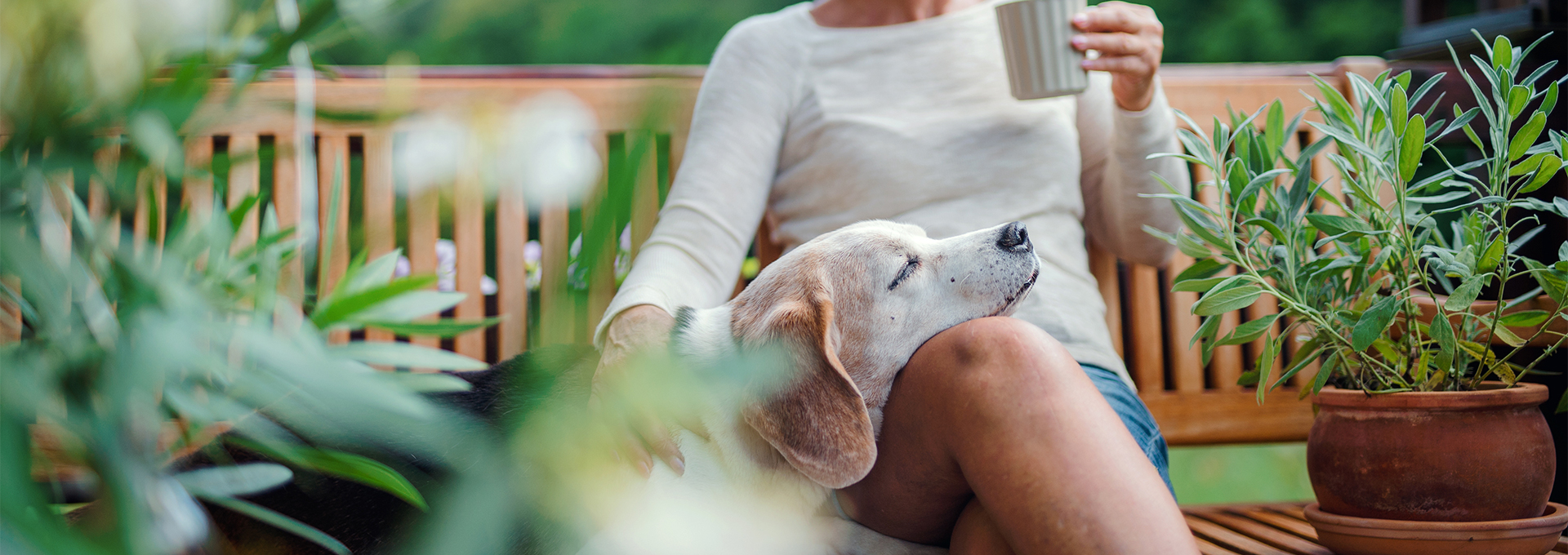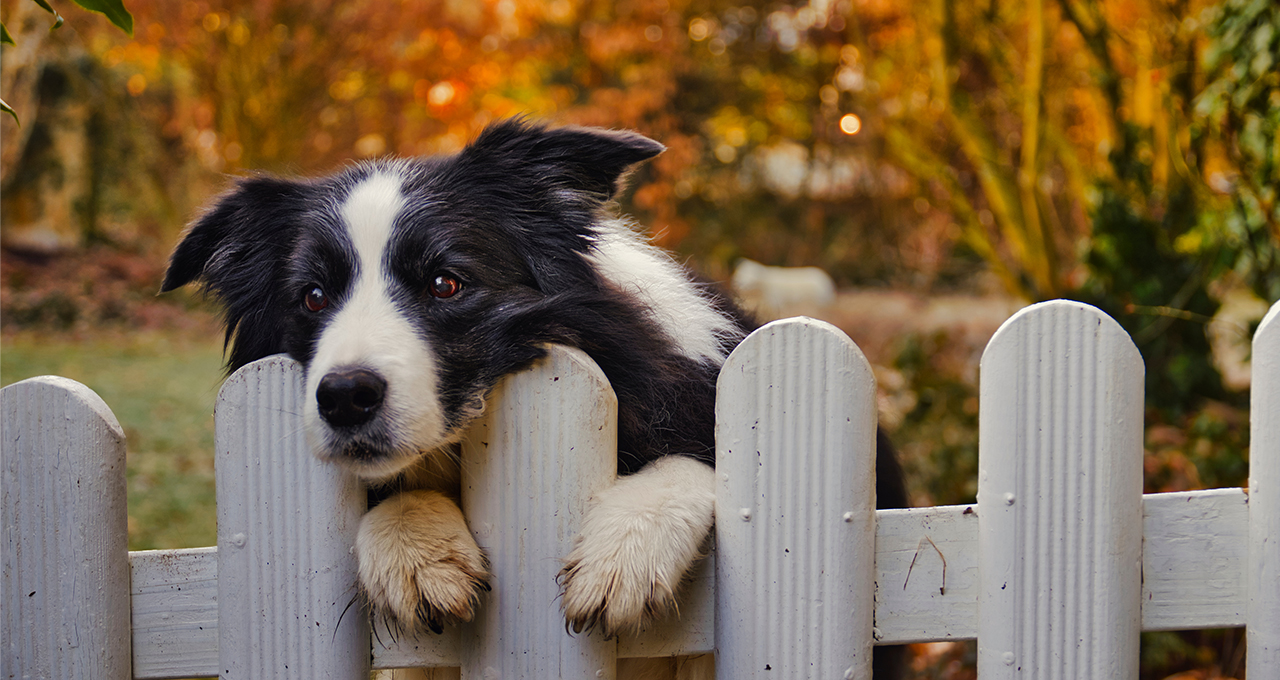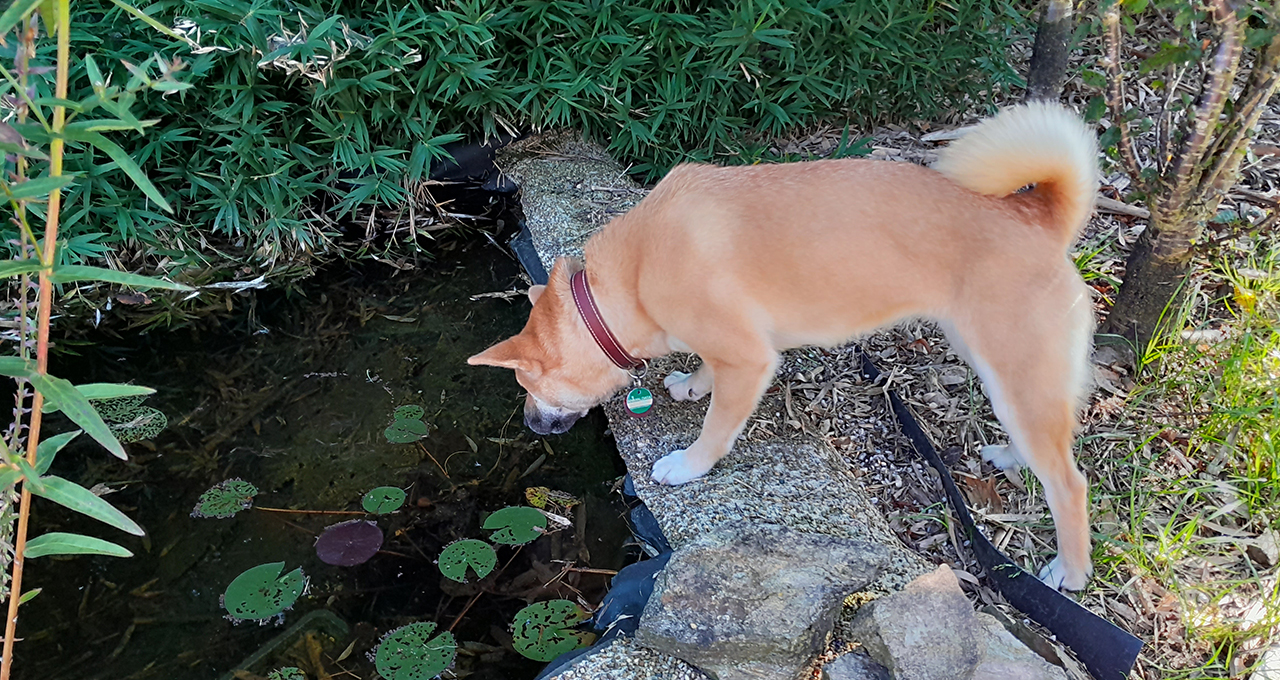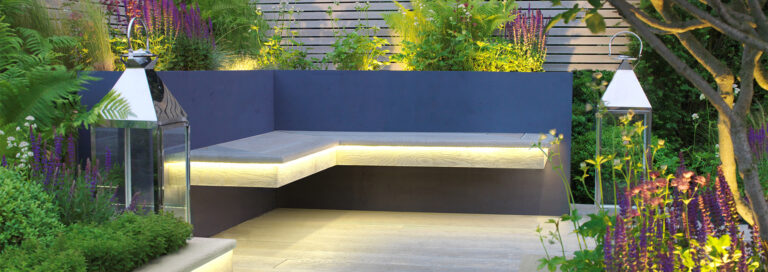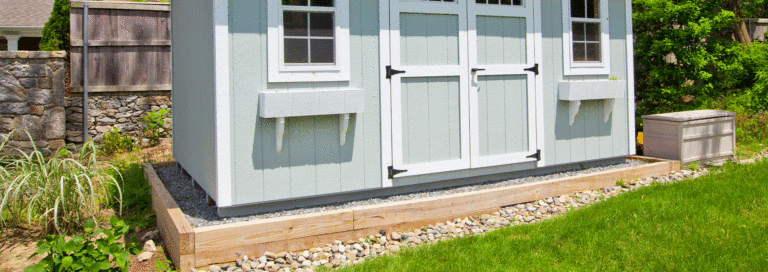Whether you’re looking to keep them in or out, dog proofing the garden is essential for ensuring pet safety and the security of your outdoor space. From determined diggers to cheeky chewers, or even a pup with an escape plan, taking the right steps can help prevent damage and avoid potential hazards. In this guide, we’ll cover practical tips to puppy proof your garden, from fencing solutions to keeping dangerous plants at bay. Let’s get to work and make sure you’re barking up the right tree!
Skip to:
Fencing
A secure fence is your first line of defence. Not only does it keep your dog safe and prevent escape, but it can also work to discourage digging and protect particular areas like vegetable patches. Even beyond dogs, a well-constructed fence can keep out other unwanted visitors such as rabbits, squirrels, or even chickens. In this section, we’ll reveal some of the best types of fencing to keep your outdoor space secure and pet friendly.
Key Considerations
There’s no worse feeling than going through all the hassle of putting up a new fence just to find that it isn’t quite right. Especially if you’re a pet owner looking at dog proofing the garden, there are a few key things to mull over first:
Height
It might seem obvious but ensure that the fence is tall enough to prevent any particularly springy suspects from jumping or climbing over. A 3ft fence is not going to do much to keep a greyhound at bay! Some breeds are known to fly over 6ft, and most will be able to jump several times their own height, so you might want to set your sights on something a little more skyward.
Research the breed for more specific information, but typically, the taller the dog, the taller your fence should be. In the UK, fences can often be up to two metres high without planning permission, though it depends on your specific property and area. If you’re interested in just how high you can go, we have an entire dedicated guide on the subject.
Materials
If you’ve got a curious chewer on your hands, opt for materials that are more durable. Wood, concrete, or composite fences can be great options, whereas plastic can easily be broken through.
Different materials will have different characteristics and maintenance requirements that should be factored into your decision. For example, some stains used to protect wooden fencing are not pet-friendly and can pose serious health hazards.
Visibility
In addition to height, the design of your fence can influence how much your dog is able to see outside of the garden, which can help eliminate excessive barking at passers-by. Plus, for particularly nervous pets, choosing a solid fence is a great option to minimise stress.
On the other hand, an open fence such as a post and rail design allows for better visibility for your furry friend, but if they’re a digger or jumper, the temptations may become all too much!
Gate Security
Whilst a sturdy fence can keep your garden enclosed, the gate is often the weakest point making it a crucial element for a dog proof garden. Ensure that you choose a gate with a reliable locking mechanism that isn’t easy for your dog to manipulate, along with a sturdy and durable material to maintain structural integrity.
If the dog in question is particularly clever or determined, consider a secondary lock, or even a motion-sensor alarm for peace of mind.
The Best Fences for a Dog Proof Garden
Once you’ve spent some time thinking about the factors above, it’s time to narrow down the best fences for your needs. Here are a few options:
- Solid Timber – The traditional go-to for garden fencing, solid timber panels offer a good level of durability and security. Additional foundations can help reinforce the structure further, making it more difficult to escape underneath the panels.
- Stock Fencing or Chicken Wire – Especially for digging dogs, different types of wire fencing are great options for the perimeter, or even marking off a specific area that you may not want your dog sniffing around. Available in different strength grades, you’ll find a solution for the most determined of pets.
- Picket Fencing – For small dogs that aren’t as springy, a picket fence can be a great option for both functionality and aesthetics, offering a classic feel. Lining the bottom with a layer of stock wire can add further security.

Decking
Decking can be a great addition to your outdoor space, but when dog proofing the garden, careful consideration is required to keep your pet safe. Slips, trips, and small injuries can be common occurrences, but even beyond that, the gaps between decking boards can be a sneaky means of escape. But, with the right precautions, your decking can become a relaxing and dog-friendly space that complements the garden without sacrificing security.
Key Considerations
From preventing escapes to limiting hazards, several key considerations will help to keep your space both safe and secure:
Slip Resistance
The British weather is no joke, and decking can become extremely slippery in wet and icy conditions. Not only is this a danger for the pets that frequent your decking, but also the people. So, it’s in your best interest to opt for decking materials with textured finishes or anti-slip features that increase grip for your dog’s paws.
If you’re not looking to invest in an entire new decking, outdoor rugs and mats can be a great option to provide additional safety in particularly slippery areas.
Spacing Between Decking Boards
Gaps that seem safe for humans may be too wide for smaller dog paws. This can result in your dog trapping their leg in the spaces, or even entirely slipping through. To prevent this, make sure your decking has small enough gaps between boards, or opt for a solid surface. Decking infills can help if your existing decking has large gaps.
Durability
If your deck is where your animal spends most of their time, durability will be a key factor to consider. Dogs can significantly increase wear and tear, whether through chewing, running, or scratching, so it is essential to choose a material that can withstand such challenges.
Additionally, durable materials will better withstand the elements, increasing the general longevity of the structure. It’s a win-win really!
Comfort
Whether they’re lounging in the sun or playing, the surface you choose can have a big impact on your pet’s comfort. For instance, certain materials in darker colours can become uncomfortably hot on your dog’s paws in the sun, and older dogs can find particularly hard and unforgiving surfaces tough on their joints.
To prevent these issues, consider softer options like composite decking. You may also want to consider adding outdoor soft furnishings like soft outdoor rugs or mats for a quicker fix.
The Best Decking for Dog Proofing the Garden
Whilst other options offer certain advantages, we find that the best allrounder is composite decking. Not only is it extremely durable, but it won’t splinter over time. Plus, unlike alternatives like metal decking, it doesn’t pose a heat risk on summer days. Slip-resistant, composite decking also boasts the best year-round performance when it comes to pets.
You might also want to consider traditional timber decking, which can be relatively cheap compared to its composite counterparts and offers a timeless look. However, if not maintained properly, it can rot and deteriorate quite quickly, accelerated by your pet.
Another option is plastic decking which offers easy maintenance, perfect for cleaning dog messes, but it is without the same level of slip and heat resistance as composite decking.
Plants and Ponds
Whilst greenery and water features are a beautiful addition to your outdoor space, understanding and mitigating the potential dangers is essential for dog proofing the garden. Some plants can be toxic to dogs when ingested, and ponds can create significant safety hazards. However, there are some key steps you can take to allow your dog to explore without having to worry…
Key Considerations
Toxic Plants
Common garden plants that we think nothing of can be toxic to dogs, especially if they’re consumed in large quantities. Some pets will avoid these dangerous plants themselves, but you can’t be too careful, especially if your dog is particularly curious. The Blue Cross has an extensive list of plants to look out for, but here are a few particularly common culprits:
- Bluebells (Hyacinthoides species)
- Daffodils (Narcissus species)
- Common poppy (Papaver rhoeas)
- Ivy (Hedra helix)
- Onion and garlic plants (Allium species)
- Potato plants (Solanum tuberosum)
- Oak (Quercus species)
You don’t always have to remove these plants! Incorporating secure fencing around the area can help keep your dog away whilst preserving these garden favourites.
Nonetheless, always consult with a vet if you have any specific concerns.
Thorns and Spikes
Like for us, thorns and spikes can be painful if they get trapped in your dog’s fur or paws. Consider removing low-lying thorny plants such as roses or blackberries or secure the area using fencing.
Chemical Fertilisers and Pesticides
Avoid spraying areas that your dog frequents with chemical products. It might also be worth putting up fencing or covers around areas that you need to treat, such as vegetable patches. Pet-friendly fertilisers can be a good option to mitigate the risk further.
Mulch and Compost
Though compost may made up of natural ingredients, it can contain dangerous moulds or bacteria. Keep your compost in a secure bin away from your pet’s favourite spots.
Creating a Puppy Proof Garden Pond
Garden ponds are a popular choice for their serene and calming atmosphere, but they can pose a big risk for dogs. Naturally curious pets may be drawn to explore the water, putting themselves at risk of falling into the pound or even ingesting harmful substances from algae to treatment chemicals. Here are five simple steps you can take to puppy proof your garden pond:
- Build a raised pond to make it harder for animals to jump in.
- Install strong mesh or netting to cover the pond.
- Invest in a pond fence to stop small dogs from getting too close.
- Create sloped edges for an easier escape route should your dog fall in.
- Avoid toxic chemicals often found in pond clarifiers and other treatments.
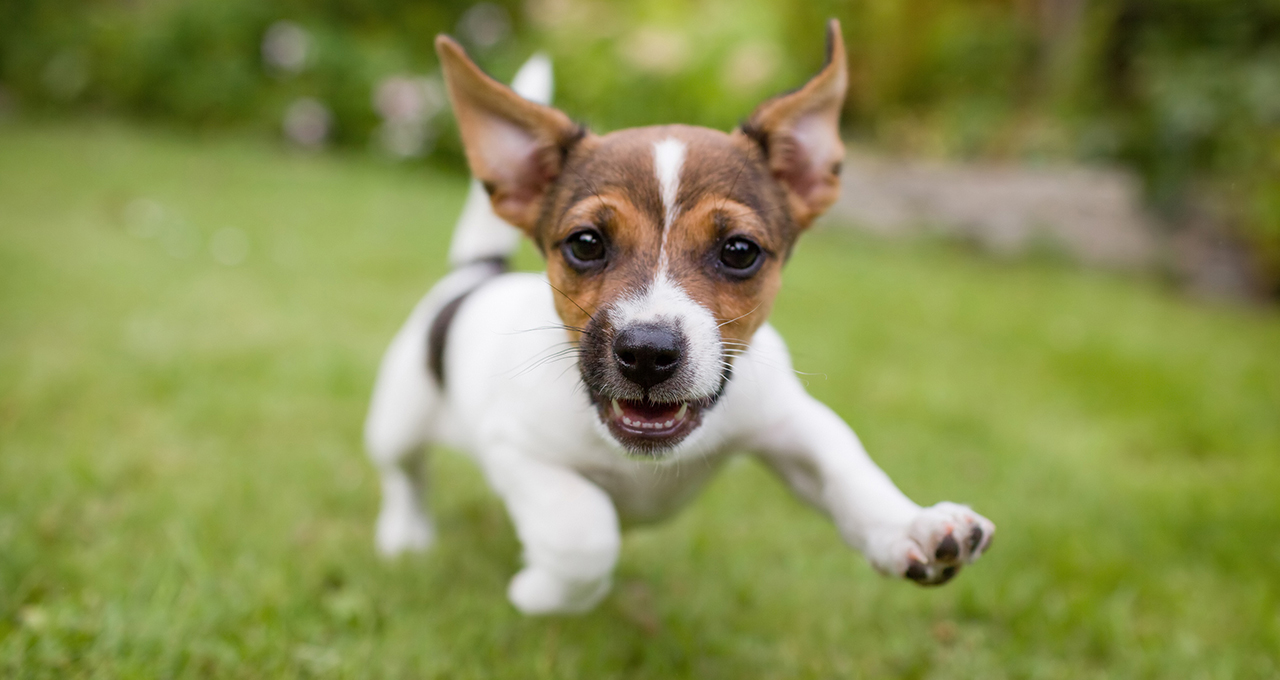
General Tips for Dog Proofing the Garden
Now we’ve covered the main areas you’ll need to address for a dog proof garden, let’s cover some more general tips. A holistic approach that adapts to your pet’s interests and behaviours is the best way to keep your garden secure and safe!
Pest Control
Common pests, such as fleas and ticks, can cause discomfort and pose health risks for your pet. Use pet-safe pest control methods to protect your dog such as regular grooming and treatment, natural repellents, and keeping your garden tidy and well-maintained.
Sturdy Outdoor Furniture
When the ‘zoomies’ hit, you’ll be thankful that you chose sturdy and high-quality outdoor furniture. Durable and heavy-duty pieces will be harder to knock over and damage, saving you money from accidental breaks. Avoid furniture with delicate features that can easily be torn or chewed through. Also, materials that are easy to clean will save you time in the future as you fight to combat muddy paws and other marks.
Supervise and Train
Even the most dog proofed garden can’t guarantee safety if your dog isn’t properly supervised or trained. Regularly checking in will allow you to promptly address potential dangers, such as an accidental open gate, or an emerging toxic plant. Plus, training your dog to respect boundaries and listen to commands will help create a safe space and prevent a wild-goose chase if something does go awry!
Conclusion
If you’ve covered all these aspects, you’re well on your way to a dog proof garden! Remember that adaptation is key, since all pets are different. For more expert advice on making the most of your garden space, our blog covers a vast array of topics, from price-guides to design ideas.
Alternatively, get in touch today or explore our product guide to get started on your pooch-proof project.

